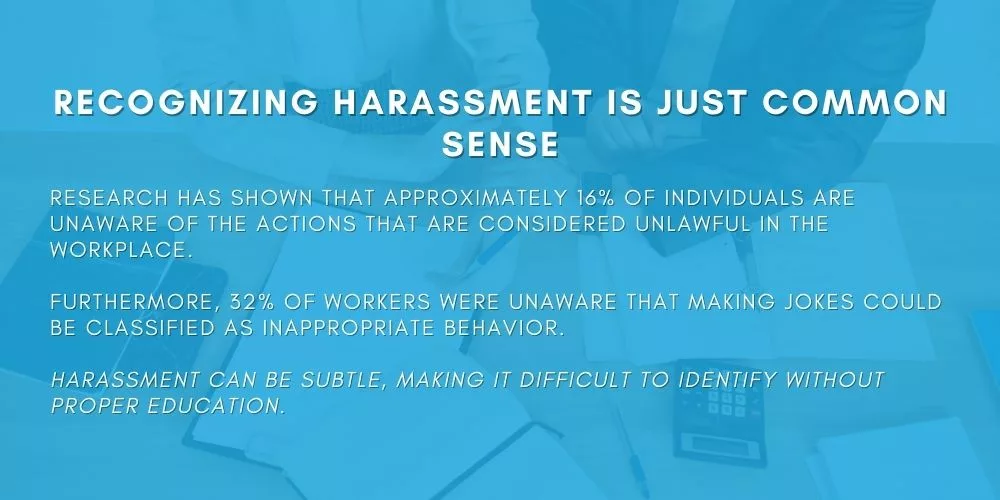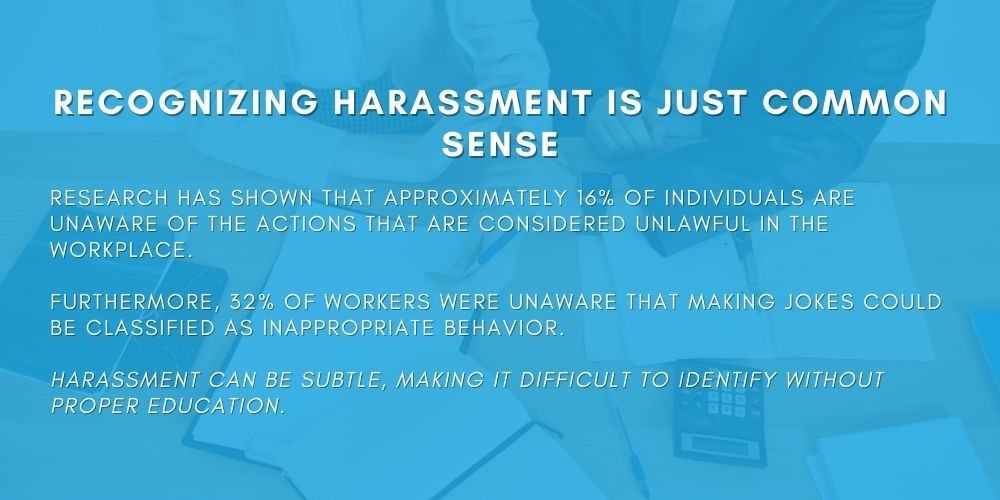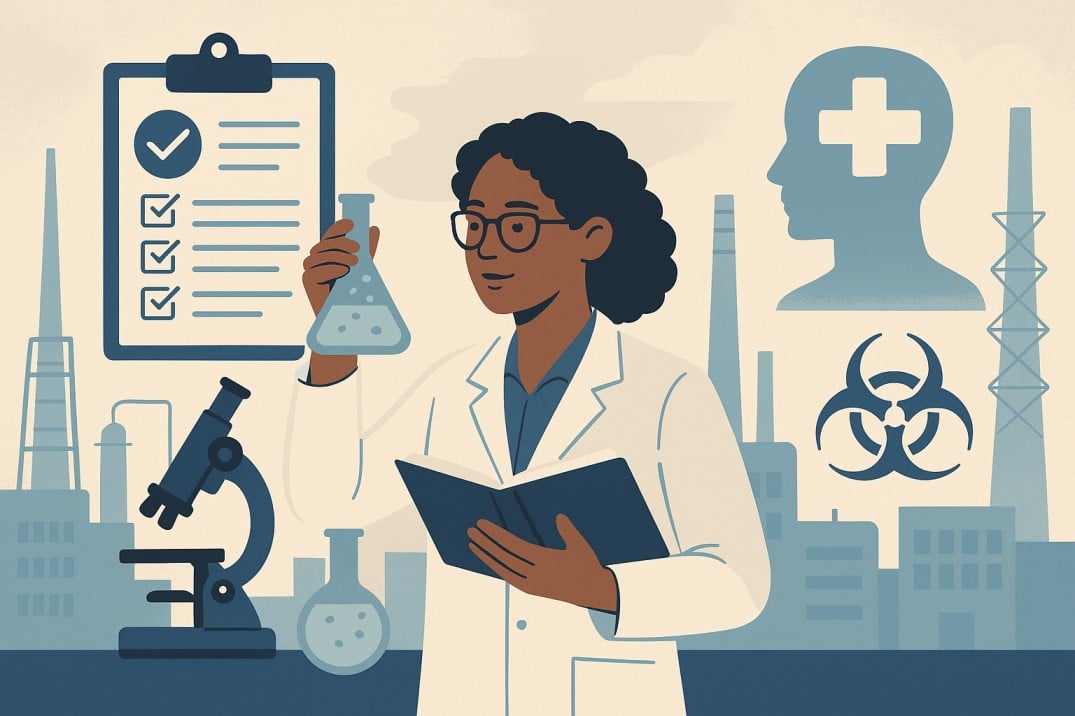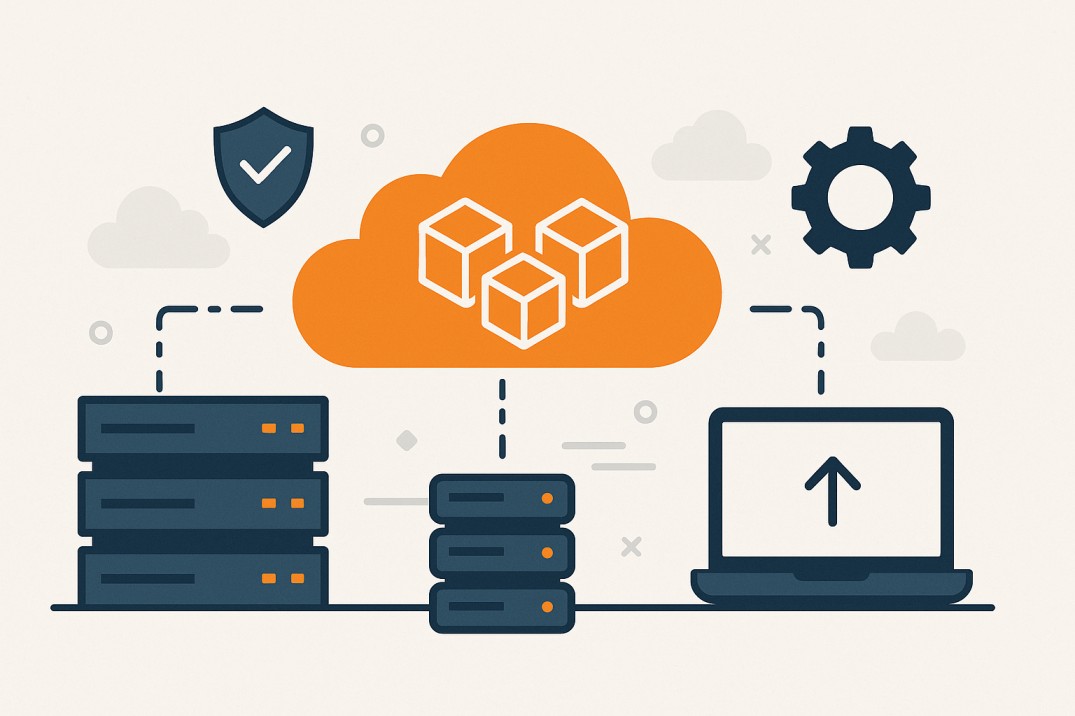Did you know that approximately 75% of workplace harassment incidents go unreported in the United States?
And according to the U.S. Equal Employment Opportunity Commission (EEOC), they received 27,291 charges of workplace harassment between 2018 to 2021.
These startling statistics emphasize the urgent need for effective harassment prevention strategies in every organization.
In this article, we’ll address common misconceptions and empower you with the facts to create a safer, more inclusive work environment.
Let’s dive in and make a positive change together!
10 Myths about Harassment in the Workplace
Did you know a respectful workplace fosters employee well-being, engagement, and productivity?
But harassment, on the other hand, can lead to reduced morale, increased absenteeism, and high employee turnover.
That’s why it’s crucial to create an inclusive culture free from discrimination and misconduct.
Below are the 10 common myths about workplace harassment.
1. Recognizing Harassment Is Just Common Sense
Research has shown that approximately 16% of individuals are unaware of the actions that are considered unlawful in the workplace.
Furthermore, 32% of workers were unaware that making jokes could be classified as inappropriate behavior.
Harassment can be subtle, making it difficult to identify without proper education.
Unconscious bias and cultural differences play a role in our perceptions of harassment.
Comprehensive training helps employees recognize and prevent harassment in all its forms.
2. A Single, Isolated Incident Cannot Be Considered Harassment
The EEOC states that a single, severe incident can indeed constitute harassment.
Addressing issues as they arise, regardless of frequency, is crucial for maintaining a safe and respectful work environment.
Must Read – 20 Reasons Why Storytelling Is The Secret Weapon Against Harassment
3. Educating Everyone Is A Waste Of Time
Research shows that organizations with inclusive cultures are twice as likely to exceed their financial targets.
By providing diversity and inclusion training, employees learn to respect and value the unique perspectives of their peers, fostering collaboration and teamwork.
It demonstrates the value of diversity and inclusion training for all employees.
Buy Now – Sexual Harassment In The Workplace For Healthcare Providers (Course)
4. Only Supervisors And Managers Can Be Harassers
A survey revealed that co-workers perpetrated workplace harassment incidents.
It highlights the need for inclusive policies and training that address power dynamics and promote open communication at all levels.
Must Read – How To Prevent Workplace Harassment
5. Only A Minority Of People Have Protected Characteristics
Protected characteristics are special traits, like race or age, that people cannot be discriminated against.
Protected characteristics apply to everyone, regardless of their background.
It underscores the importance of understanding these characteristics to promote equality and prevent discrimination.
Buy Now – Texas Sexual Harassment Training For Managers And Supervisors (Course)
6. Harassment Is Only An Issue For Large Organizations
Small organizations are not immune to harassment.
It underscores the importance of harassment prevention measures for organizations of all sizes.
Buy Now – Texas Sexual Harassment In The Workplace For Dental Healthcare Providers
7. Compliance Is The Only Reason For Training
In a Society for Human Resource Management (SHRM) survey, 72% of respondents agreed that harassment prevention training improved workplace culture.
While legal compliance is important, it’s not the sole reason for training.
Anti-harassment training goes beyond compliance, helping organizations build a culture of respect, empathy, and conflict resolution.
It empowers employees to actively participate in creating a safe work environment.
Buy Now – Human Resource Management (Course)
8. Victims Are Solely Responsible For Reporting Harassment
A study found that bystander intervention is crucial in preventing harassment.
Encouraging employees to report misconduct and support their colleagues promotes a safe and respectful workplace.
9. All Harassment Prevention Education Is The Same
Employees who received tailored harassment prevention training reported decreased workplace harassment incidents.
Customized training is more effective in addressing specific organizational needs and fostering a sense of shared responsibility.
It is because they are tailored to the organization’s unique needs, addressing specific issues and fostering a sense of shared responsibility.
A customized approach ensures that training is relevant, engaging, and effective.
10. Harassment Only Occurs Between People Of Opposite Genders
According to TUC data, about 68% of the LGBTQ population experience harassment in the workplace.
It highlights harassment can happen to anyone, regardless of gender and sexual orientation.
Gender equality and harassment prevention training should be inclusive and address various types of harassment, including bullying prevention and gender-neutral language.
The Path To A Safer, More Inclusive Workplace
We can foster an inclusive culture and promote employee engagement by debunking these myths.
Investing in comprehensive harassment prevention training and policies is essential for creating a safe and respectful work environment that benefits both employees and organizations.
Coggno: Your Trusted Partner For Harassment Prevention Training
Regarding providing comprehensive and effective harassment prevention training, Coggno is a trusted partner for many organizations.
With a wide variety of courses and customizable training solutions, Coggno offers a user-friendly LMS platform.
It helps businesses create a safe, respectful, and inclusive workplace culture.
Why Choose Coggno For Harassment Prevention Training?
By partnering with Coggno, you can create a safer, more inclusive, and respectful workplace for everyone.
Comprehensive Course Library: Coggno offers diverse courses covering various aspects of harassment prevention, including diversity and inclusion, unconscious bias, gender equality, and more. It ensures that your employees receive well-rounded and thorough training.
Customizable Training Solutions: Understanding that each organization has unique needs, Coggno allows for customizing training materials. This tailored approach ensures that your employees receive relevant, engaging content that addresses your organization’s concerns.
Easy-To-Use Platform: Coggno’s user-friendly platform makes it simple for both employees and administrators to access and manage training materials. With progress tracking and reporting features, Coggno helps organizations stay on top of their training goals.
Cost-Effective: Coggno offers a variety of pricing options to suit businesses of all sizes. By providing cost-effective solutions, Coggno allows organizations to invest in high-quality harassment prevention training without breaking the bank.
Ongoing Support: With dedicated customer support, Coggno ensures that your organization has the necessary resources to effectively implement and maintain your harassment prevention training program.
Must Read – The Prevention of Harassment In The Workplace
Conclusion
We hope this article has helped you better understand the importance of harassment prevention in the workplace and debunked some common misconceptions.
Remember, fostering an inclusive culture goes beyond compliance—it’s about creating a workplace where everyone feels valued, respected, and empowered to thrive.
By addressing these myths head-on, we can work together to build safer, more inclusive workplaces for everyone.
Now that you’re armed with knowledge let’s make a difference!
Buy Now – Preventing Workplace Harassment – Managers (US) Course





















